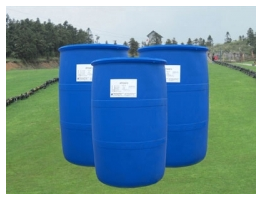At present, chemical flooding is the main method of tertiary oil recovery in China, and surfactant is suitable for chemical flooding. On the basis of practical work experience, many experts and scholars put forward requirements for surfactant flooding in oil fields, which are summarized as follows:
1) surfactant has high activity on the oil-water interface and strong ability to reduce the oil-water interface, making the interfacial tension between oil and water lower than 10.2 Mn / m, with a certain degree of solubility, and the cloud point is not affected by pH value or has a small impact. To be careful
2) the interaction between surfactant and rock surface is small, and the adsorption capacity on rock surface is weak or not easy.

3) surfactant dissolves in formation water, has a large diffusion speed, but has a strong anti dilution ability, that is, the surfactant concentration is reduced, so as to reduce the oil-water interfacial tension or become smaller, and the oil displacement effect is better.
4) it has good stability, does not react with other chemicals or injected water or bottom materials, and has no cracking and degradation reaction.
5) in the process of oil displacement, the relationship between the compatibility of surfactant flooding system and the degree of reservoir development should be considered. Chinese style
6) surfactant is suitable for temperature and salinity of oil displacement reservoir, and has high temperature and salt resistance. There are many classification methods for different types of surfactants, the common type is the structure of hydrophilic ionic group of surfactants in aqueous solution, which can be divided into five types: anionic, cationic, amphoteric, non-ionic and hybrid; according to the molecular weight, they can be classified into low molecular surfactants (molecular weight 300) and high molecular surfactants (molecular weight 300) More than 1000); according to the requirements of reservoir conditions for tertiary oil recovery technology on surfactant performance, it can be divided into salt resistant surfactant system, temperature resistant surfactant system, salt resistant and high temperature resistant surfactant system and surfactant system under special formation conditions; according to the source classification, it can be divided into natural surfactant, synthetic surfactant and biosurfactant According to solubility, surfactants can be classified into water-soluble surfactants and oil-soluble surfactants.